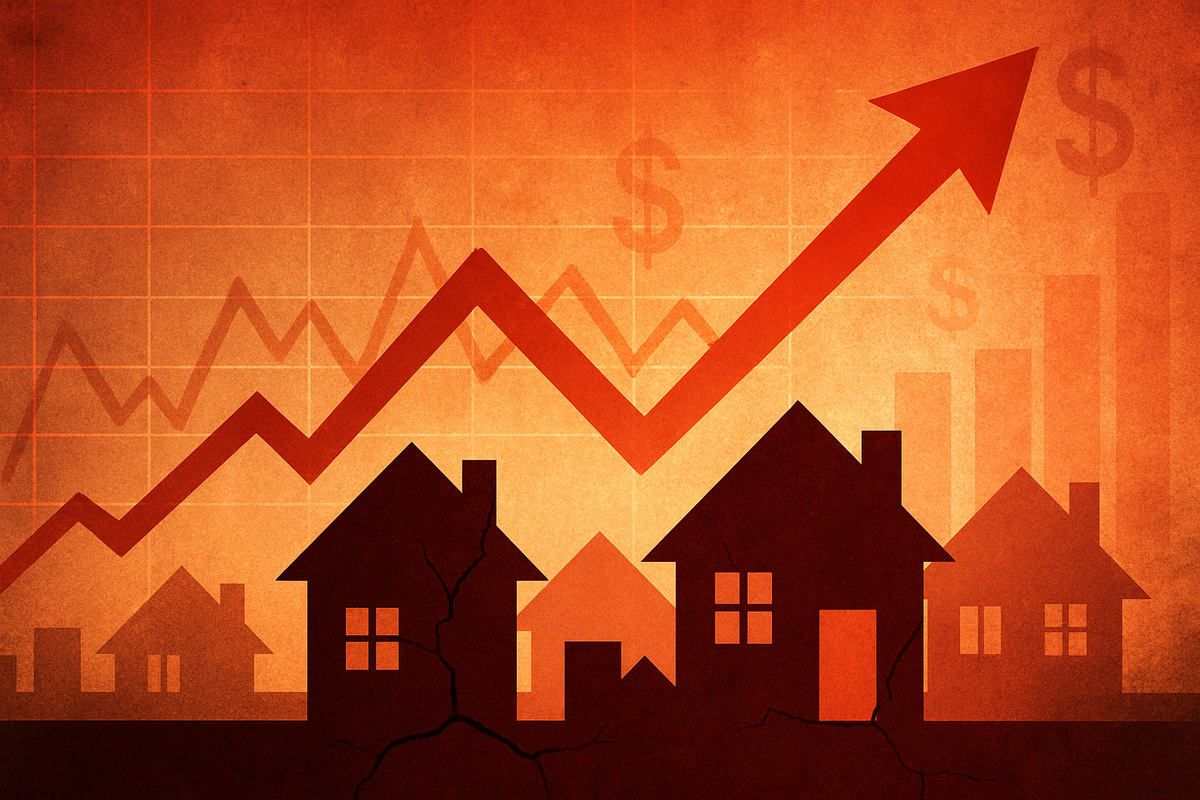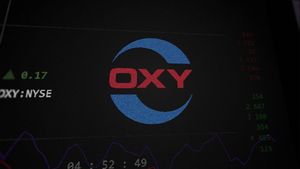
The United States is currently navigating a period of sustained elevated long-term mortgage rates, a trend that continues to exert significant pressure on the housing market and casts a long shadow over the broader financial landscape. As of October 2, 2025, the average 30-year fixed mortgage rate hovers in the mid-6% range, marking a continuation of high borrowing costs despite recent minor fluctuations. This persistent elevation, while showing some recent easing influenced by a Federal Reserve rate cut, remains a critical barrier to housing affordability for millions of Americans.
The immediate implications are stark: housing affordability is at a near-crisis level, with a vast majority of US households priced out of the median-priced new home. This has led to noticeable price adjustments and a welcome, albeit cautious, increase in housing inventory, shifting some power back to buyers after years of a seller's market. However, the high cost of financing continues to dampen home sales and limits refinancing activity, creating a ripple effect that extends from consumer spending to broader economic growth, all while the Federal Reserve attempts to balance inflation control with economic stability.
Elevated Rates and Market Readjustment: A Closer Look
The trend of increasing long-term US mortgage rates has been a defining characteristic of the housing market since 2022, when rates began their ascent from historic lows. While there have been periods of slight reprieve, such as the minor dips observed in late summer 2025, the overarching narrative is one of elevated borrowing costs. As of October 2, 2025, the average 30-year fixed mortgage rate is approximately 6.36%, according to Bankrate, with Freddie Mac (US:FMCC) reporting a similar figure of 6.34%. This represents a slight increase from the previous week, indicating continued volatility even within a generally high-rate environment. Earlier in 2025, rates had approached 7%, settling into a pattern above 6.5% for much of the year before a more recent cycle of variability brought them consistently below 6.5% in August.
A significant event influencing this trend was the Federal Reserve's (FED) (US:FED) decision in September 2025 to implement its first benchmark rate cut since December 2024, bringing the target range to 4.0% to 4.25%. This move was prompted by concerns over a weakening labor market and persistent inflation, and it contributed to a slight easing of borrowing costs across the economy, including mortgages. However, the spread between Treasury yields and mortgage rates remains wide, limiting the extent to which mortgage rates can fall. The market is currently engaged in a "data-driven tug-of-war," with expectations of modest declines into year-end, but no dramatic drops are anticipated.
Key players in this scenario include the Federal Reserve, whose monetary policy decisions directly influence the cost of borrowing; mortgage lenders, who set the specific rates offered to consumers; and the broader financial markets, particularly the bond market, which impacts Treasury yields that serve as a benchmark for mortgage rates. Initial market reactions have been a mixed bag. The housing market has undeniably slowed, with sales of previously occupied homes reaching nearly 30-year lows in 2024 and continuing below 2024 levels in 2025. Fannie Mae (US:FNMA) has revised its total home sales outlook for 2025 slightly downward to 4.72 million. However, a recent uptick in pending home sales suggests that some homebuyers are gaining confidence to re-enter the market, capitalizing on the slightly lower rates seen in recent months compared to earlier in the year. This delicate balance highlights a market in flux, where buyers are increasingly cautious, and sellers are beginning to adjust their price expectations.
The affordability crisis is particularly acute. Nearly 75% of US households cannot afford a median-priced new home, which stands at approximately $459,826 with a 6.5% mortgage rate. This means over 100 million households are effectively priced out of the market. The impact of even small rate increases is substantial; a mere 25-basis point rise can price an additional 1.1 million households out of the market. This has led to a noticeable increase in active housing inventory, which jumped 17% year-over-year in September, remaining above 1 million homes for the fifth consecutive month. Price cuts are also becoming more common, with almost one in five American homes listed for sale seeing a reduction in September 2025, particularly for homes in the $350,000 to $500,000 range. This indicates a significant shift in market dynamics, moving from a protracted seller's market to one where buyers are slowly regaining leverage.
Corporate Fortunes Diverge Amidst Mortgage Rate Headwinds
The sustained elevation of long-term US mortgage rates has created a distinct cleavage in the financial fortunes of public companies, with clear winners and losers emerging across the housing and financial sectors. The environment, characterized by reduced affordability and transaction volumes, forces businesses to adapt or face significant challenges.
Mortgage lenders and brokers are undoubtedly among the primary losers. Companies like Rocket Companies (NYSE: RKT), a major publicly traded mortgage originator, are highly vulnerable to decreased demand for new mortgages and refinancing activities. Higher rates directly translate to fewer loan originations, shrinking revenues from fees and commissions. The "lock-in effect," where homeowners with lower existing rates are unwilling to sell, further exacerbates this by reducing the pool of potential new mortgages. This has led to widespread industry consolidation and job losses within the mortgage sector, as many professionals find their livelihoods impacted.
Real estate companies primarily focused on existing home sales and certain Real Estate Investment Trusts (REITs) also face significant headwinds. Brokerage firms such as Redfin (NASDAQ: RDFN), which rely heavily on transaction volume, are experiencing reduced revenue as existing home sales reach multi-decade lows. While some REITs are resilient, those with significant exposure to commercial real estate, particularly office properties, are struggling to refinance property debt in a tighter credit market with repriced yield expectations. Additionally, building material suppliers like Builders FirstSource (NASDAQ: BLDR) and large home improvement retailers such as Home Depot (NYSE: HD) and Lowe's (NYSE: LOW) could see reduced sales in categories tied to new construction and major renovations, despite some offsetting activity from existing homeowners opting to renovate rather than move.
Conversely, homebuilders have surprisingly emerged as relative winners in this high-rate environment. The "lock-in effect" on existing homeowners, which restricts the supply of previously owned homes, pushes buyers towards new construction. Despite higher borrowing costs, the fundamental undersupply of housing continues to drive demand for new builds. Major publicly traded homebuilders like PulteGroup (NYSE: PHM), Lennar (NYSE: LEN), D.R. Horton (NYSE: DHI), Toll Brothers (NYSE: TOL), and KB Home (NYSE: KBH) have demonstrated resilience, and some have even seen increased sales and profits. They have been proactive in offering incentives, such as mortgage rate buy-downs, to make their new homes more attractive, effectively capturing market share.
Traditional banks with strong balance sheets and diversified revenue streams, particularly those that are "asset-sensitive" (where interest-earning assets reprice faster than interest-bearing liabilities), can also benefit. Rising interest rates generally boost Net Interest Income (NII) as banks charge more for loans. Large institutions like JPMorgan Chase (NYSE: JPM), Bank of America (NYSE: BAC), and Wells Fargo (NYSE: WFC), while navigating broader economic shifts, may experience an uplift in their NII. Furthermore, certain types of REITs, specifically multifamily and single-family rental (SFR) REITs, are benefiting from the "lock-in effect," which pushes more individuals into the rental market as homeownership becomes less attainable. Companies such as AvalonBay Communities (NYSE: AVB) and Camden Property Trust (NYSE: CPT), with strong balance sheets and low leverage, are well-positioned to capitalize on increased rental demand.
Wider Significance: A Shifting Economic Tectonic Plate
The persistent trend of elevated long-term US mortgage rates, even with recent minor adjustments, signifies more than just a challenging housing market; it represents a significant shift in the broader economic landscape. This phenomenon is intricately woven into several overarching industry trends, creating ripple effects that extend far beyond real estate.
Firstly, the housing affordability crisis remains paramount. For years, home price appreciation has outpaced wage growth, a trend exacerbated by higher borrowing costs. This has made homeownership, particularly for first-time buyers, increasingly unattainable. This trend is leading to a stabilizing but slow housing market, where price growth is moderating, but transaction volumes, especially for existing homes, are at multi-decade lows. A critical factor is the "rate-lock effect," where a vast majority of existing homeowners enjoy significantly lower mortgage rates (many below 6% or even 5%). This disincentivizes them from selling, keeping housing inventory tight despite dampened demand, and paradoxically supporting home values against sharper declines. Consequently, there's a noticeable shift towards new construction for some buyers, as new homes offer a more accessible entry point into the market in the absence of ample existing inventory.
The ripple effects extend across various sectors. For mortgage lenders, the environment means reduced origination volumes for both purchases and refinancing, leading to increased competition and operational challenges. Real estate agents face tougher market conditions with fewer transactions, while home builders contend with slower demand for new projects and potentially higher construction costs. Appraisers and title companies also experience a slowdown in business. Consumers, beyond the housing market, are reacting by cutting back on discretionary spending, postponing major financial decisions, and even dipping into savings to cover household expenses, signaling a broader tightening of consumer belts. This erosion of consumer confidence and spending power can have significant implications for retail and other consumer-facing industries.
Regulatory and policy implications are also profound. The Federal Reserve's (FED) (US:FED) cautious approach to future rate cuts, even after its September 2025 reduction, means mortgage rates may not fall as quickly as some desire, as the Fed balances inflation control with economic growth. Potential government shutdowns continue to pose a risk, capable of disrupting government-backed mortgages and essential services like flood insurance, adding volatility and processing delays. Furthermore, significant shifts in the credit scoring landscape, such as the Federal Housing Finance Agency's (FHFA) (US:FHFA) approval of VantageScore 4.0 for conforming mortgages, are challenging FICO's (NYSE: FICO) long-held monopoly. This move aims to foster competition and potentially increase access to credit, impacting credit bureaus like Experian (LON: EXPN), Equifax (NYSE: EFX), and TransUnion (NYSE: TRU), and leading to new strategic alliances with fintech companies.
Historically, the current environment draws parallels to the 1970s and early 1980s, a period marked by rampant inflation and aggressive Federal Reserve tightening that pushed mortgage rates to historic highs (peaking at over 18% in 1981). While today's rates are far from those extremes, the combination of persistent inflation and elevated rates echoes that era's challenges. More recently, the 2022-2023 rate hikes saw mortgage rates more than double in a short span, significantly cooling the market. A key distinction today, however, is the acute housing supply shortage, which acts as a floor for home prices, preventing the sharp declines seen in some historical downturns. The current average 30-year mortgage rate, while elevated, remains below the long-term average of 7.70% since 1971, suggesting that while challenging, the market is not in unprecedented territory in terms of rate levels alone, but rather in the context of affordability and supply dynamics.
What Comes Next: Navigating an Evolving Landscape
The trajectory of increasing long-term US mortgage rates has set the stage for an evolving housing market and financial landscape, demanding strategic pivots and careful navigation from all stakeholders. Both short-term and long-term possibilities suggest a "higher-for-longer" paradigm, though with anticipated easing.
In the short term (late 2025 - early 2026), most experts predict 30-year fixed mortgage rates will generally remain in the mid-6% range, potentially averaging around 6.4% in late 2025 and easing slightly to 6.3% in early 2026. This outlook hinges on inflation continuing its cooling trend towards the Federal Reserve's 2% target, manageable unemployment, and anticipated further rate cuts by the Fed following its September 2025 reduction. However, mortgage rates are more closely tied to the 10-year Treasury yield, which can move independently of the Fed's short-term rate, introducing an element of volatility. For the long term (2026 and beyond), a more significant decline into the low-6s by late 2026 is widely anticipated, with Fannie Mae (US:FNMA) forecasting year-end 2026 rates at 5.9%. This easing is expected to improve affordability, but a return to the sub-3% rates seen during the pandemic is not foreseen.
Strategic adaptations are crucial across the board. Prospective homebuyers must prioritize financial preparation, explore options like Adjustable-Rate Mortgages (ARMs) with caution, and actively seek builder incentives. Making larger down payments and improving credit scores can also secure better terms. Homeowners with rates above 6% might find refinancing attractive as rates ease, while those with significantly lower rates will likely remain "locked in." Mortgage lenders and brokers need to enhance operational efficiency, embrace financial technology, and develop innovative loan products to address affordability gaps. Homebuilders should continue to focus on "spec homes" and more affordable units, maintaining sales incentives like rate buydowns to attract buyers.
This environment presents both market opportunities and challenges. Opportunities include increased refinancing activity as rates ease, continued growth in new construction (especially with builder incentives), and sustained demand for multi-family housing and related REITs like AvalonBay Communities (NYSE: AVB) due to affordability challenges pushing more people into the rental market. Certain regional markets, particularly in the Sunbelt, may also offer localized strength. However, challenges persist, including the ongoing affordability crisis, the "lock-in effect" limiting existing home supply, and potential interest rate volatility driven by economic data or geopolitical events. Regulatory uncertainty, such as proposals for privatizing Fannie Mae (US:FNMA) and Freddie Mac (US:FMCC), could also introduce new complexities and potentially increase mortgage costs.
Several potential scenarios could unfold. The most likely scenario involves rates averaging around 6.4% in late 2025 and easing to 6.3% in early 2026, supporting modest but steady increases in home sales. A gradual decline into the low-to-mid 6% range by late 2025 or 2026 could trigger a rebound in sales, though persistent inventory shortages might still push prices higher. In a "good news" scenario, if inflation drops faster than expected, rates could dip below 6.0% by March 2026, significantly invigorating the market. Conversely, rate volatility could persist if economic uncertainty remains high, or in a less likely but possible scenario, rates could remain elevated or even rise further if inflation reignites. Stakeholders must remain agile, monitoring economic indicators and policy shifts closely to adapt to these evolving conditions.
Comprehensive Wrap-up: A New Normal for the Housing Market
As of October 2, 2025, the US housing market is navigating a new normal defined by elevated long-term mortgage rates. The key takeaway is that while rates have seen some recent fluctuations and a modest easing influenced by a Federal Reserve rate cut, they remain significantly higher than the historical lows of recent years. This has fundamentally reshaped housing affordability and market dynamics.
The market moving forward is expected to be one of gradual recalibration. Home prices, after several years of robust gains, are stabilizing, with modest annual growth projected. A significant boom or crash is not widely anticipated, largely due to the persistent undersupply of housing and the "lock-in effect" on existing homeowners, which limits inventory. The crucial factor for an improved market remains a further easing of mortgage rates, with forecasts suggesting a gradual decline into the low-6% range by late 2026. This would make homeownership more feasible for a broader segment of the population and stimulate sales activity.
The lasting impact of this period will be a permanent shift in buyer expectations regarding borrowing costs. The era of ultra-low mortgage rates appears to be firmly in the past. The current environment reinforces the importance of diligent financial planning and adaptability for both homebuyers and homeowners. It has also spurred innovation among lenders and homebuilders to address affordability challenges through new products and incentives.
Investors should watch for several key indicators in the coming months. Foremost are the Federal Reserve's policy decisions and statements regarding future interest rate adjustments, closely tied to the trajectory of inflation data, particularly the core PCE index. Economic growth and job market reports will also provide critical insights into the broader economic health and its influence on rates. Furthermore, monitoring the 10-year Treasury yield, which mortgage rates tend to follow, and changes in housing market inventory and demand will be essential for anticipating shifts in home prices and sales volumes. Finally, global economic events and potential geopolitical shifts could also introduce volatility. By carefully tracking these factors, investors can better position themselves in an evolving housing and financial landscape.
This content is intended for informational purposes only and is not financial advice





